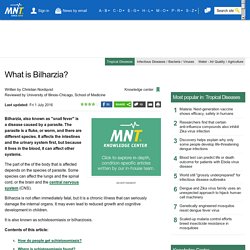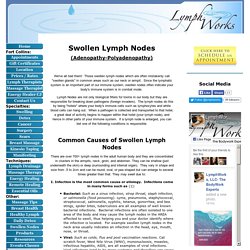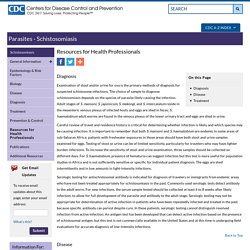

9 Herbs That Naturally Kill Parasites. Mims' Medical Microbiology,With STUDENT CONSULT Online Access ,5: Mims ... - Richard V. Goering, Cedric A. Mims, Hazel Dockrell, Mark Zuckerman, Peter L. Chiodini, Ivan Roitt - Google Books. Mims' Microbiology makes it easy for you to learn the microbiology and basic immunology concepts you need to know for your courses and USMLE.

Using a clinically relevant, systems-based approach, this popular medical textbook accessibly explains the microbiology of the agents that cause diseases and the diseases that affect individual organ systems. With lavish illustrations and straightforward, accessible explanations, Mims' Microbiology makes this complex subject simple to understand and remember. Learn about infections in the context of major body systems and understand why these are environments in which microbes can establish themselves, flourish, and give rise to pathologic changes. This systems-based approach to microbiology employs integrated and case-based teaching that places the "bug parade" into a clinical context. Hunter's Tropical Medicine and Emerging Infectious Disease - Alan J. Magill, G. Thomas Strickland, James H. Maguire, Edward T Ryan, Tom Solomon - Google Books.
Hunter’s Tropical Medicine and Emerging Infectious Disease is your comprehensive, go-to resource on the health conditions that arise in the tropics!

From infectious diseases through environmental issues, poisoning and toxicology, animal injuries, and nutritional and micronutrient deficiencies, this medical reference book provides you with all the guidance you need to diagnose and manage even the most exotic health concerns. Stay at the forefront of this ever-changing field with Hunter’s Tropical Medicine and Emerging Infectious Disease! What is Bilharzia? Bilharzia, also known as "snail fever" is a disease caused by a parasite.

The parasite is a fluke, or worm, and there are different species. It affects the intestines and the urinary system first, but because it lives in the blood, it can affect other systems. The part of the of the body that is affected depends on the species of parasite. Some species can affect the lungs and the spinal cord, or the brain and the central nervous system (CNS). Bilharzia is not often immediately fatal, but it is a chronic illness that can seriously damage the internal organs. It is also known as schistosomiasis or bilharziosis. How do people get schistosomiasis? People may become infected through direct contact with contaminated fresh water where certain types of water snail live, because the snails carry the worm. Bilharzia is a parasite transmitted from freshwater snails to humans.
Bilharzia enters the body when the larvae of the fluke, or parasite, pass through the skin. Ln internal med final. Swollen Lymph Nodes. We've all had them!

Those swollen lymph nodes which are often mistakenly call "swollen glands" in common areas such as our neck or armpit. Since the lymphatic system is an important part of our immune system, swollen nodes often indicate your body's immune system is in combat mode. Lymph Nodes are not only biological filters for toxins in our body but they are responsible for breaking down pathogens (foreign invaders). The lymph nodes do this by being "hotels" where your body's immune cells such as lymphocytes and white blood cells can hang out. When a pathogen is collected and transported to that hotel, a great deal of activity begins to happen within that hotel (your lymph node), and hence in other parts of your immune system.
Common Causes of Swollen Lymph Nodes. Schistosomiasis Clinical Presentation: History, Physical Examination. Schistosomiasis, Fact Sheet No 115; February 2010.

World Health Organization. Available at Accessed: Oct 5, 2010. Schistosomiasis Clinical Presentation: History, Physical Examination. Schistosomiasis - Resources for Health Professionals. On this Page Diagnosis Disease Treatment Diagnosis Examination of stool and/or urine for ova is the primary methods of diagnosis for suspected schistosome infections.

The choice of sample to diagnose schistosomiasis depends on the species of parasite likely causing the infection. Adult stages of S. mansoni, S. japonicum, S. mekongi, and S. intercalatum reside in the mesenteric venous plexus of infected hosts and eggs are shed in feces; S. haematobium adult worms are found in the venous plexus of the lower urinary tract and eggs are shed in urine. Careful review of travel and residence history is critical for determining whether infection is likely and which species may be causing infection. Serologic testing for antischistosomal antibody is indicated for diagnosis of travelers or immigrants from endemic areas who have not been treated appropriately for schistosomiasis in the past.
Back to Top Disease. Flatworm and Flukes - Resources for life. Flatworm and Flukes Flatworm fascinate me, especially the blood fluke.

Blood flukes are parasitic right from the word ‘Go’ and remain parasitic throughout their entire life cycles. As free-swimming larvae, they are released into freshwater by infected snails. They either penetrate the skin of a human host or are ingested with vegetables, fish or crustaceans. Once inside us they’re resident in our veins for 20 to 30 years. Let’s look at the overall picture first. 1. 2. We often think of animals hunting and fighting for food, but flatworms appear to hunt and fight for mates. “Flatworms have both male and female sex organs in the one animal. Using new camera technology, Marine Biologist Leslie Newman of Australia's Southern Cross University participated in filming two marine flatworms engaging in some odd reproductive behaviour -- referred to as ‘penis fencing’.